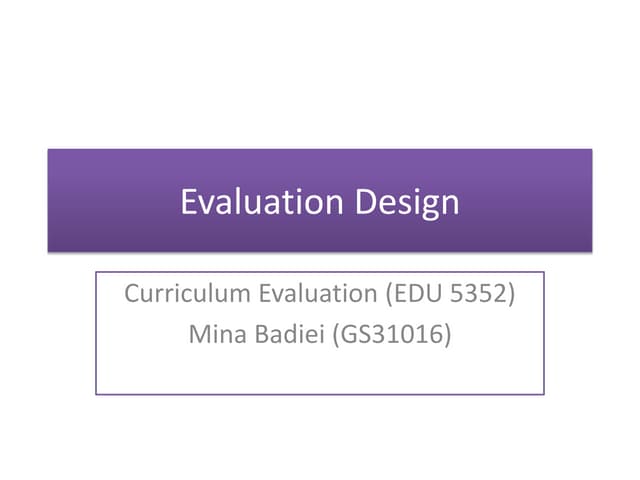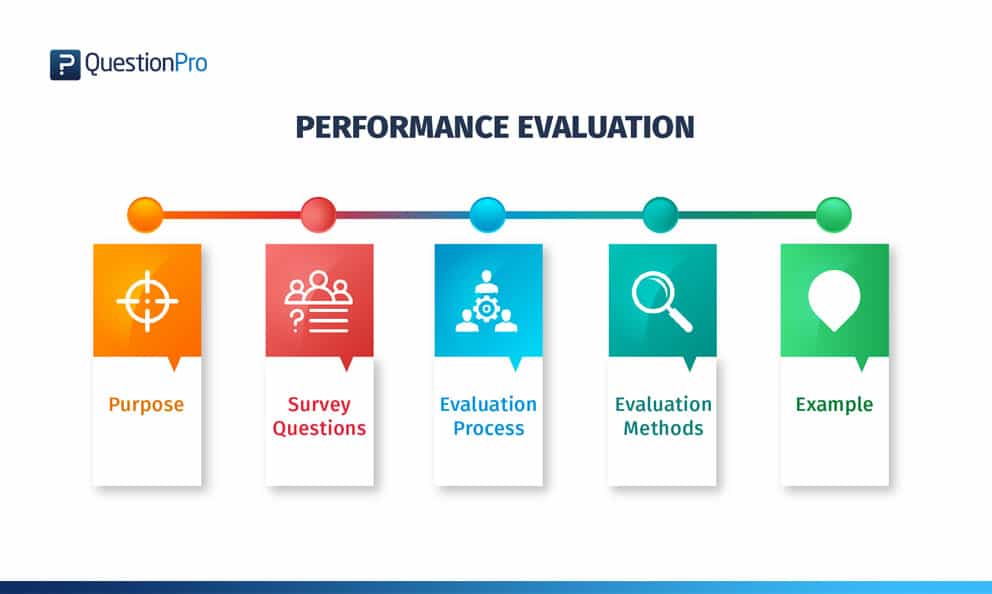Table Of Content

After you have a detailed program description, this information can be used to build a list of possible evaluation questions, choose those that are most important to be tested and build an appropriate evaluation design to answer your research questions. Monitoring the use of the framework and evaluating its acceptability and impact is important but has been lacking in the past. We encourage research funders and journal editors to support the diversity of research perspectives and methods that are advocated here and to seek evidence that the core elements are attended to in research design and conduct. We have developed a checklist to support the preparation of funding applications, research protocols, and journal publications.9 This checklist offers one way to monitor impact of the guidance on researchers, funders, and journal editors.
Research participants
Design and evaluation of new wound dressings based on collagen-cellulose derivatives - ScienceDirect.com
Design and evaluation of new wound dressings based on collagen-cellulose derivatives.
Posted: Sat, 11 Nov 2023 01:11:35 GMT [source]
A role-play can be considered as a teaching strategy where learners play a role that closely resembles real-life scenarios. A well-organized storytelling allows learner to manage problematic situations, leading to the development of problem-solving skill20,21. When compared to traditional lecture-based learning, learners can also enhance their communication skills through conversations with simulated patients22,23.
To improve how things get done:
Early identification of inconsistencies between utility and feasibility is an important part of the evaluation focus step. But we must also ensure a “meeting of the minds” on what is a realistic focus for program evaluation at any point in time. There are roughly three stages in program development –planning, implementation, and maintenance — that suggest different focuses.
Evaluation Research Design: Examples, Methods & Types
Teaching a skill – for instance, employment training, parenting, diabetes management, conflict resolution – often falls into this category. While evaluations of some of these – medical treatment, for example – may require a control group, others can be compared to data from the field, to published results of other programs, or, by using community-level indicators, from measurements in other communities. Two groups of participants in a substance use intervention program, for instance, may have similar histories, but if one program is voluntary and the other is not, the results aren’t likely to be comparable. One group will probably be more motivated and less resentful than the other, and composed of people who already know they have a potential problem. The motivation and determination of their participants, rather than the effectiveness of the two programs, may influence the amount of change observed. In any variety of interrupted time series design, it’s important to know what you’re looking for.

Outcome assessments
Those interested in participating in the research were informed to directly contact us to request more information, and they were subsequently allowed to decide whether they would like to participate. Although this staff person should have the skills necessary to competently coordinate evaluation activities, he or she can choose to look elsewhere for technical expertise to design and implement specific tasks. However, developing in-house evaluation expertise and capacity is a beneficial goal for most public health organizations. Of the characteristics of a good evaluator listed in the text box below, the evaluator’s ability to work with a diverse group of stakeholders warrants highlighting.

A menu of potential evaluation uses appropriate for the program's stage of development could be circulated among stakeholders to determine which is most compelling. Interviews could be held with specific intended users to better understand their information needs and timeline for action. Resource requirements could be reduced when users are willing to employ more timely but less precise evaluation methods.
However, some participants suggested that this learning approach could be rearranged in either second or third year of the program. As they already had experience in clinical practice, the gamified online role-play would reinforce their competence in teledentistry. Participants had agreed that the location for conducting a gamified online role-play should be in a private room without any disturbances, enabling learners to focus on the simulated patient. This could allow them to effectively communicate and understand of the needs of patient, leading to a better grasp of lesson content. In addition, the environments of both learners and simulated patient should be authentic to the learning quality. Learner experience and preferences appeared to have impact on how the participants perceived the use of gamified online role-play for teledentistry training.
What is Program Evaluation?: A Beginners Guide
Random assignment, reduces the chances that the control and intervention schools vary in any way that could influence differences in program outcomes. For example, if the students in the intervention schools delayed onset or risk behavior longer than students in the control schools, you could attribute the success to your program. However, in community settings it is hard, or sometimes even unethical, to have a true control group.
Types of Program Evaluation
We thank the experts who provided input at the workshop, those who responded to the consultation, and those who provided advice and review throughout the process. The many people involved are acknowledged in the full framework document.9 Parts of this manuscript have been reproduced (some with edits and formatting changes), with permission, from that longer framework document. We recommend that the guidance is continually updated, and future updates continue to adopt a broad, pluralist perspective. Given its wider scope, and the range of detailed guidance that is now available on specific methods and topics, we believe that the framework is best seen as meta-guidance. Further editions should be published in a fluid, web based format, and more frequently updated to incorporate new material, further case studies, and additional links to other new resources.
This section presents a framework that promotes a common understanding of program evaluation. The overall goal is to make it easier for everyone involved in community health and development work to evaluate their efforts. Program evaluation - the type of evaluation discussed in this section - is an essential organizational practice for all types of community health and development work. It is a way to evaluate the specific projects and activities community groups may take part in, rather than to evaluate an entire organization or comprehensive community initiative. The design you select influences the timing of data collection, how you analyze the data, and the types of conclusions you can make from your findings. A collaborative approach to focusing the evaluation provides a practical way to better ensure the appropriateness and utility of your evaluation design.
They will directly experience the consequences of inevitable trade-offs in the evaluation process. For example, a trade-off might be having a relatively modest evaluation to fit the budget with the outcome that the evaluation results will be less certain than they would be for a full-scale evaluation. Because they will be affected by these tradeoffs, intended users have a right to participate in choosing a focus for the evaluation. An evaluation designed without adequate user involvement in selecting the focus can become a misguided and irrelevant exercise. By contrast, when users are encouraged to clarify intended uses, priority questions, and preferred methods, the evaluation is more likely to focus on things that will inform (and influence) future actions. Consider the appropriateness and feasibility of less traditional designs (e.g., simple before–after [pretest–posttest] or posttest-only designs).
The participants were blinded to the selected card, while it was revealed to only the simulated patient. The challenging conditions were mimicked by the organizers and simulated patient, allowing learners to deal with difficulties. Therefore, both challenges and randomness were implemented into this learning intervention not only to create learning situations but also to enhance engagement. This implies a shift from an exclusive focus on obtaining unbiased estimates of effectiveness66 towards prioritising the usefulness of information for decision making in selecting the optimal research perspective and in prioritising answerable research questions. The methods available for an evaluation are drawn from behavioral science and social research and development. Experimental designs use random assignment to compare the effect of an intervention between otherwise equivalent groups (for example, comparing a randomly assigned group of students who took part in an after-school reading program with those who didn't).

No comments:
Post a Comment